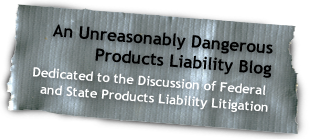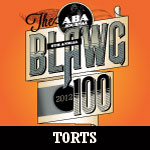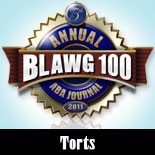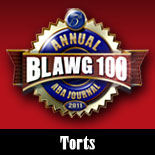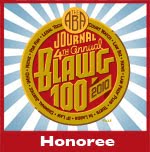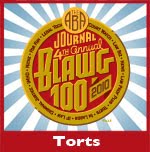The District Court of Massachusetts was recently asked to grant a new trial under Federal Rule of Civil Procedure
59(a)(1)(A) on the ground that the jury instructions delivered to the jury were erroneous.
O’Neil v. Electrolux Home Prods., Inc., No. 06-10433-
DPW, 2010
WL 3504191 (D. Mass. Sept. 7, 2010). What makes this case of interest is the fact that Plaintiffs, who base their motion for a new trial on the alleged erroneous jury instructions given, submitted the identical instructions to the court and did not object to the oral recitation of these instructions to the jury prior to deliberation. It was only after the jury requested a typed copy of the instructions that Plaintiffs objected.
This is a products liability action involving an accident in which Plaintiff backed over his young son with a lawn mower. Plaintiffs filed suit against the manufacturer, asserting among other claims, breach of warranty by design defect. At the trial of this action, the following jury instructions were given:
To determine whether there was a design defect you should consider whether the product has a potential, sometimes referred to as a propensity, resulting from the manufacturer’s conscious design choice that rendered the product unreasonably dangerous to foreseeable users and, therefore, unfit for its ordinary foreseeable uses . . .
The phrase at issue is italicized above — “unreasonably dangerous to foreseeable users.” As stated above, the instructions requested by Plaintiffs included this very language and Plaintiffs made no objections when orally given by the Court. Hours into deliberation, the jury asked for criteria to determine when a product is “unreasonably dangerous.” The Court proposed sending a typed copy of the prior instructions to the jury. Plaintiffs objected to the phrase above and suggested the following phrase as a replacement — “unreasonably dangerous to foreseeable users or foreseeable bystanders.” The Court declined Plaintiffs’ suggestion and submitted the original instructions to the jury. Shortly thereafter, the jury found in favor of Defendants.
Then, Plaintiffs sought a new trial on the ground of erroneous jury instructions. The District Court of Massachusetts first stated that the test was a two-part test: 1) whether the objection was waived and 2) whether the instruction was erroneous.
The Court’s analysis of the first part of the test is most interesting. Defendants claimed that since Plaintiffs did not object to these instructions orally given, they cannot now object to the same exact language being given to the jury in hard copy. The Court disagreed with Defendants on this point, stating that Plaintiffs only “waived any challenge to that instruction at that time,” but not the supplemental instructions, even if they had the same content. Under the second prong of the test, Plaintiffs argued that failure to include “foreseeable bystander” in the instruction was “misleading and gave an inadequate understanding of the law.” The Court now disagreed with Plaintiffs, finding that the instructions as written were in line with Massachusetts law and the jury was fully aware that Defendants could be liable for injury to Plaintiffs’ son as a bystander from both parties’ opening and closing arguments and through the testimony at trial. Therefore, the Court found no error and denied Plaintiffs’ motion for a new trial.
We thought that the Court’s finding no waiver was interesting: it is a “second bite at the apple” for Plaintiffs. Therefore, practitioners should be aware of how this Court analyzed this issue if faced with a similar argument on a motion for a new trial.

